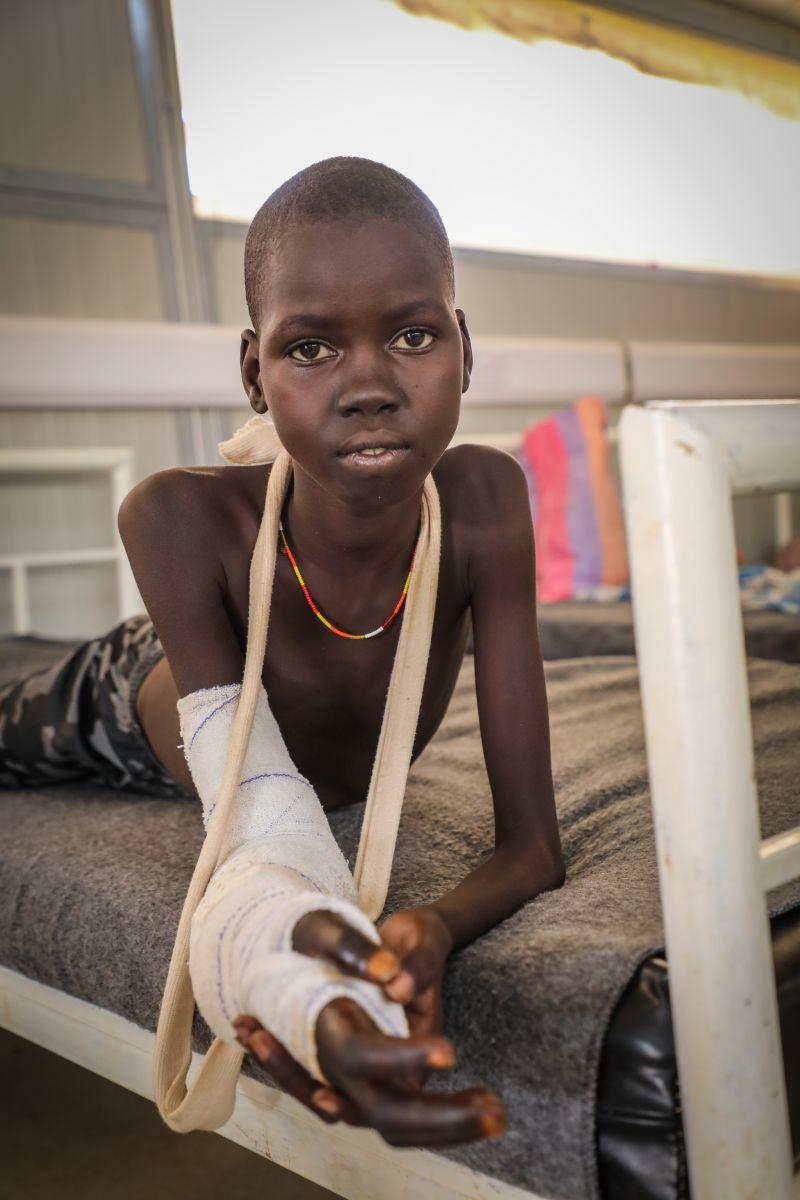GENEVA – Médecins Sans Frontières (MSF) welcomes the release of the long-anticipated World Health Organization (WHO) strategy on the prevention and control of snakebite envenoming, with the ambitious targets to cut in half the number of snakebite deaths and cases of disability by 2030. Governments and funding organisations must step up now and respond to snakebite with the urgency and attention this neglected public health crisis demands.
“We are cautiously optimistic that the WHO’s snakebite strategy could be a turning point in tackling this disease, and governments, donors and other stakeholders must not squander this opportunity, but instead provide concrete political and financial support to ensure its success,” said Julien Potet, Policy Advisor on Neglected Tropical Diseases for MSF’s Access Campaign. “It is time for everyone to harness this momentum and stop unnecessary deaths and disabilities from snakebites once and for all.”
MSF is encouraged that the multifaceted strategy includes a clear recommendation for current and future products to be safe and affordable, and ambitious plans to increase treatment rates and access to antivenoms in affected regions. The strategy also importantly emphasises the need to raise awareness around prevention, first aid and where to seek proper treatment through community-level education and training of medical personnel, especially those engaged in emergency medical services and primary health care. Clinical guidance will further ensure the appropriate use of expensive antivenoms and reduce their wastage by medical personnel.
A super killer, a neglected response
Every year, an estimated 5.4 million people are bitten by snakes, up to 2.7 million of whom are envenomed, resulting in death for more than 100,000 people and life-long disfigurement and disability for 400,000 more. Snakebite envenoming (the medical condition resulting from a snakebite) predominantly afflicts the rural poor, including migrant workers, farmers, and displaced people fleeing conflict or violence, and kills more people than any other disease on WHO’s Neglected Tropical Diseases list.
MSF has witnessed the devastating impact of snakebites on victims, their families and communities in many of the places we work: beyond death and severe disability, snakebite survivors also often suffer from stigma and discrimination, and many families are driven into debt in their attempts to get hold of treatment.
Yet, the global response to this tragic situation has been, until more recently, disappointing. Attempts to tackle this crisis over the last three decades have failed, and the domestic and international funds currently allocated by governments and donors to end snakebite remain extremely insufficient.
As a result, financing of snakebite care and treatment predominantly relies on the out-of-pocket expenditure of victims who have limited financial resources and little political voice. The launch of the WHO strategy, with clear funding requirements, is therefore a major step forward and MSF hopes it will lead to successful and swift actions.
“The toll that snakebite envenoming takes on people around the world truly represents a hidden epidemic," said Dr Gabriel Alcoba, MSF Tropical Medicine Advisor. “We are encouraged to see that WHO’s snakebite strategy emphasises empowering communities and strengthening health systems to reduce the global snakebite burden. The disease must be confronted in a holistic, patient-centred way, including through preventative health programmes at the community-level that can measurably reduce the risk of snakebite."
Lack of access to quality care
Snakebite is curable, yet the vast majority of snakebite victims are unable to access effective treatment. Paying for all of the doses of antivenom needed for treatment can cost hundreds of dollars, and, especially in rural settings, it is often unavailable, with referral or ambulance services and trained health workers lacking.
Due to the relatively high prices of antivenoms, people are often lured into purchasing unproven traditional therapies or cheaper antivenom products of questionable quality, further contributing to the high rate of death and disability from snakebite. Several pharmaceutical corporations recently stopped the production of antivenoms intended for use in Africa, because the products were not sufficiently lucrative, thus increasing the risk of a major supply crisis.
As the WHO’s strategy is rolled out by governments, concrete steps need to be taken to scale up access to safe antivenoms that already exist in the market, and to further prioritise the development of new and better tools against snakebite envenoming.
“Many more lives could be saved if all snakebite victims had access to timely and appropriate care, including antivenoms,” said Potet. “To ensure access to affordable, quality-assured antivenoms, the effectiveness of existing products must be urgently assessed, and additional funds must be pledged to develop an international mechanism to subsidise and guarantee a stable supply of antivenoms. Antivenoms must be available and free-of-charge to people affected by snakebite, for whom access is a matter of life or death.”
MSF admitted more than 3,000 patients to its clinics for snakebite in 2017, predominantly in sub-Saharan Africa and the Middle East. Around half of these people required antivenom treatment, which MSF provides free of charge. The majority of snakebite patients were treated in MSF projects in Central African Republic, South Sudan, Ethiopia and Yemen. MSF also treated significant numbers of people in Tanzania, Kenya, Cameroon, Sudan and Sierra Leone.
